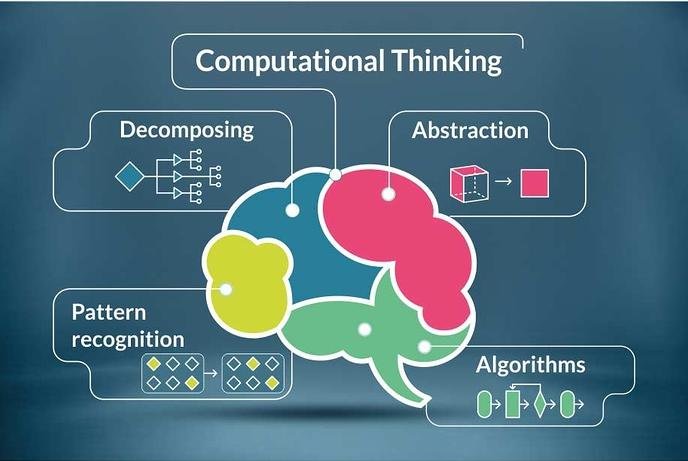What is Computational Thinking?
Computational thinking is a problem solving skill. It is looking at a problem and finding a logical solution. It can be broken down into four parts:
- Decomposition– breaking down a problem into small and easy to solve parts
- Pattern Recognition using prior knowledge to recognize patterns in different problems
- Abstraction– focusing on the details that matter and getting rid of those that don’t
- Algorithmic thinking– a set of rules to solve the problem
How does it fit into the BC Curriculum?
Applied Design, Skills and Technologies curricular competencies from K-9 aligns perfectly with computational thinking. You can click the link here to see the full list of curricular competencies, but here is a general list that students will develop:
- In the applied design section, competencies are broken down into the following sections: Understanding Context, Defining, Ideating, Prototyping, Testing, Making, and Sharing.
- Making: “Make a product using known procedures or through modelling of others. Use trial and error to make changes, solve problems, or incorporate new ideas from self or others.” This aligns aligns with all four parts of computational thinking.
- Ideating: Screen ideas against criteria and constraints- this correlates with abstraction.
- Testing: Make changes, troubleshoot, and test again- this is an example of abstraction and algorithmic thinking.
- Defining: Identify criteria for success and any constraints – pattern recognition and abstraction.
This is just one subject where computational thinking is applied; however, this type of problem solving can be used in every subject. Whenever a student encounters a problem, whether it be in math, science, or English, they can break the problem into smaller parts, use prior knowledge, sift through what’s important or not, and use a set of rules to come up with a solution. This type of problem solving correlates with having a growth mindset, wherein, if a student can not come up with a solution the first time they try, they will not give up, but seek for an alternate solution.
How does it fit into 21st century learning?
The Chartered Institute for IT has this to say about computational thinking: “Computational thinking skills are beneficial to careers in virtually every sector, including consumer products, business and financial markets, energy, travel and tourism, or public services such as healthcare, education and law and order. Workplaces need employees to take an active role in thinking problems through and creating solutions.”
The Super Mario Effect- Games Trick Your Brain to Learn
Mark Rober video take aways: Framing the learning: constantly failing without having a negative attitude. Super Mario effect, the focus is on beating the game and not on the failures. Focusing on the princess and not the pits, to stick with a task and learn more. Their outlook was the difference. Reframe the challenge. Change the word test to a game. Change scary science to a game to reframe it and make it engaging and fun. The fear of failure is taken off the table. Where is the risk and reward? A straight line is boring. Failing and failing and then succeeding is where the growth comes from.
Children play games to mimic roles to which they must ultimately prepare.




